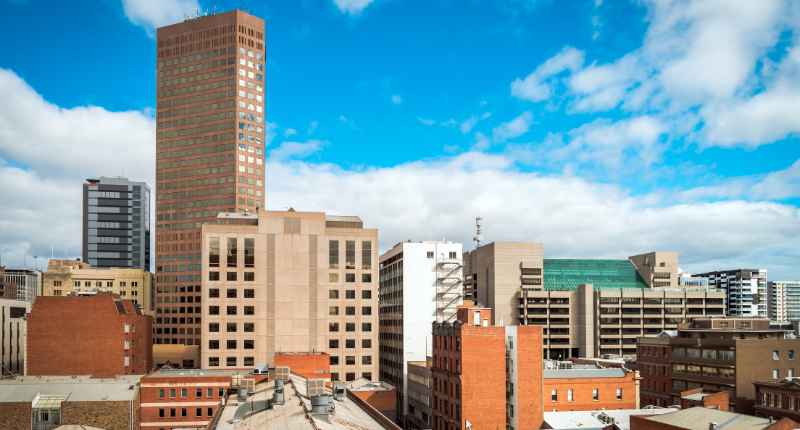
- Adelaide market had 3,000 sqm of positive net absorption in Q2 2023.
- Prime office vacancies rose due to more supply being added into the market.
- Well fitted B-grade offices very popular in Adelaide.
Adelaide’s office leasing market posted 3,000 square metres (sqm) of positive net absorption in the second quarter of 2023, according to JLL Research. This means that the net absorption across the 2022/23 financial year now stands at 13,000 sqm.
Meanwhile, Adelaide’s office rents increased, with prime gross effective rents rising by 4.3% over 12 months to June 2023.
The overall Central Business District (CBD) vacancy dropped by 50 basis points to 16% in another win for the Adelaide market.
Adelaide CBD office – quarterly net absorption, 2021-2023

Adelaide’s CBD prime office vacancy grew to 18.4%, its highest peak in decades, while secondary vacancies were at their lowest in ten years, at 14.2%.
JLL research director, Rick Warner, commented that new supply, rather than falling demand, was responsible for the capital city’s prime office vacancy rise.
“While better quality office space is leasing quickly, 2023 has seen new developments completed at a faster rate than the market can absorb them, which has increased vacancy.”
“The Adelaide CBD is amenity rich when compared to the Adelaide Fringe and suburban office markets. We’ve seen a wave of defence-related firms centralise to the city from non-CBD locations as they expand and upgrade accommodation.
“This centralisation trend is expected to continue over the next 12 months, driven by a strengthening hospitality sector and improving night-time economy, which is beneficial for firms looking to attract its workforces back to the office,” Warner said.
Adelaide’s B-grade offices were the star performers
JLL South Australia head of leasing, Tom Budarick, said that a predicted drop in Q2 market performance never arrived. He believed that one of the reasons for the good market performance was the popular B-grade buildings that provided well-made fit-outs, which enabled tenants to move in without delay.
“There has been a high absorption of B-grade office space since the December quarter 2022 and the sub-1000 sqm sector is actively taking advantage of market conditions,” Budarick said.
He remarked that the healthy growth in office occupancy confounded expectations, given that inquiries in the second quarter of 2023 were at their lowest since 2016.
“Activity has increased significantly in June and July and we expect a number of executed leases to materialise in H2, but the market remains cautious in the face of the economic slowdown and deals are taking longer to finalise,” Budarick said.
Demand for older stock continues to decline
While premium offices were seeing high demand, Budarick noted that the C-grade sector’s performance leaves much to be desired, even though rents have dropped over the last two quarters.
“Tenants are selecting well-located, quality space with good amenity over low rents as businesses focus on providing the best work environment for staff,” Budarick said.
Indeed, this flight-to-quality trend has been observed across every commercial office market in Australia, as businesses have realised that they needed to revamp the workplace experience to lure workers back to the office post-COVID-19.
According to Warner, much of the prime market’s activity stems from premium corporate tenants and the SA government. Sub-leased office space comprised a mere 0.3% of the 1.4 million sqm, the lowest in over a decade.
Warner also said that the Property Council of Australia’s February office occupancy survey revealed that 80% of Adelaide workers were going to the office, making the capital city have one of the highest rates of office attendance in Australia.







